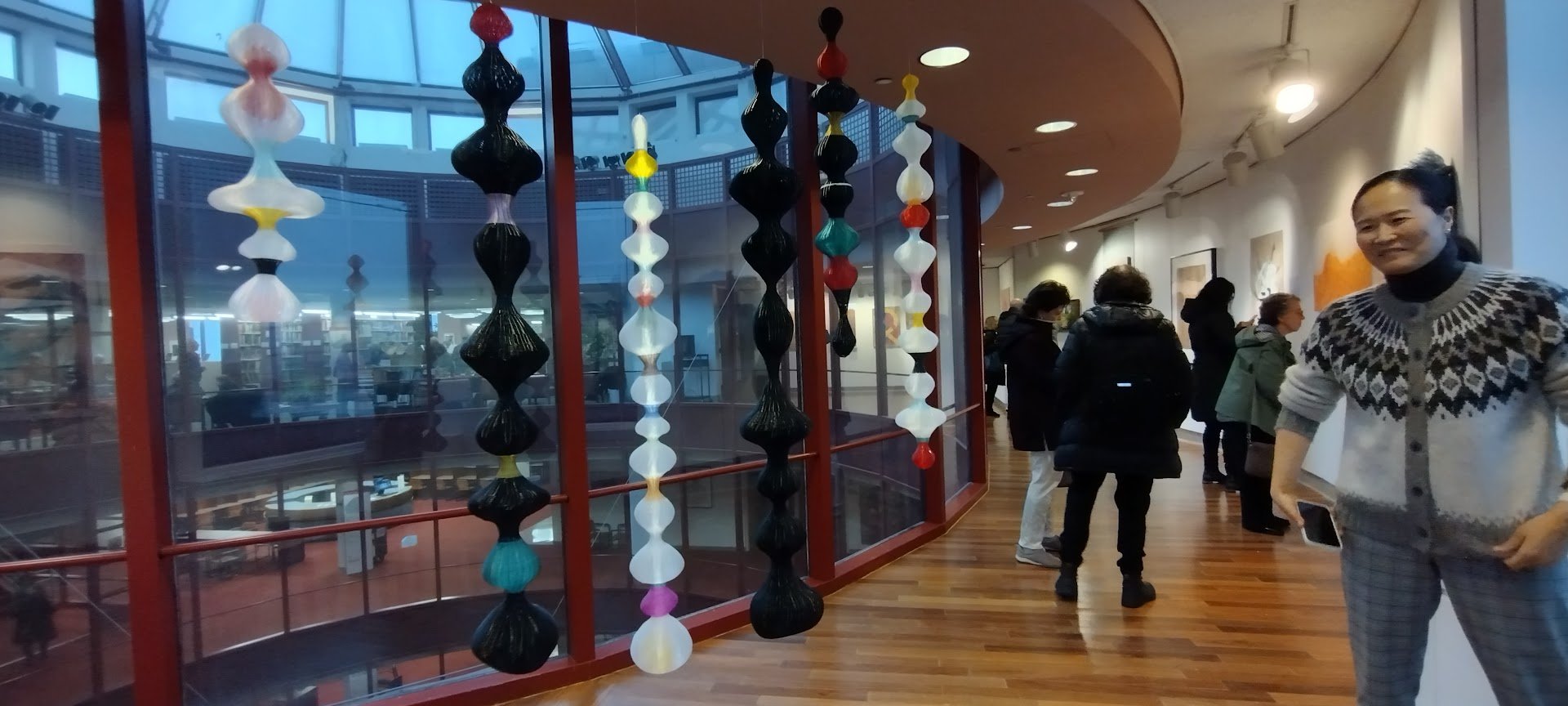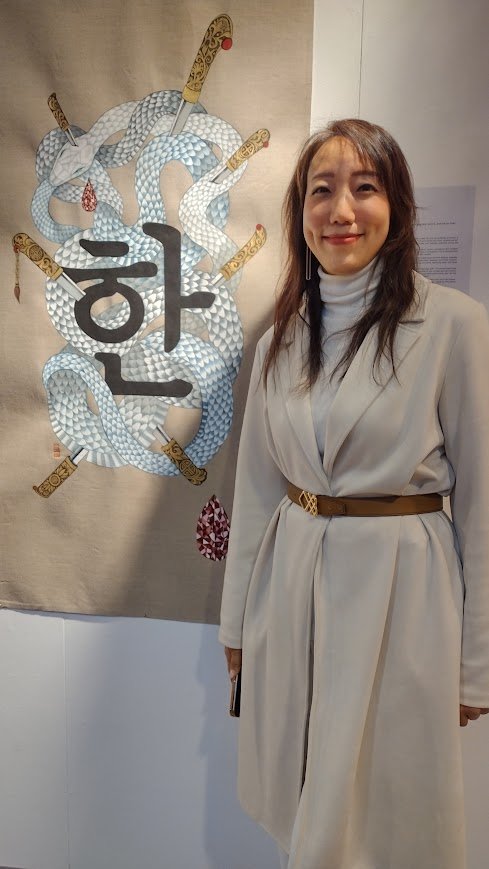Women artists hold ‘Femina Creativa’ Exhibit at the Queens College
By Marivir Montebon
New York - I walked in awe through the post-modern circular hallway of the Rosenthal Library during the opening reception of Femina Creativa on the rainy and cold Saturday of March 9, 2024 at the Queens College. Its walls were bursting with works of art in spectacular color and character.
Twenty-three women artists featured their masterpieces in the exhibit which opened on March 2, 2024 in time for the Women’s History Month until April 29, 2024 at the Queens College.
Sueim Koo’s “My spirit is stepping into hop one at a time (mixed media collage with pastel on canvas) creates an ambience of spring.
Artist Sui Park and her Thread 1-6
The artists are: Amy Supton, Denise Sfraga, Dong Hee Lee, Donnelly Marks, Cui Fei, Hyo Jeong Nam, Janet Schneider, Jeong Min Park, Jisook Kim, Katy Martin, Margie Neuhaus, Michal Shapiro, Natali BravoBarbee, Rejin Leys, Sky Pape, Stephanie S. Lee, Sueim Koo, Sui Park, Tina Seligman, Weihui Lu, Yu-Whuan Wang, Shortt ❤ West
Thread 1-6 by Sui Park is definitely an eyecatcher. Created in 2023, it is made of Clear Monofilament, Black Monofilament, Color Monofilament and approximately 80”H x 60”W floating in the middle of the circular exhibit hall.
Michal Shapiro, artsy conservation.
It was a pleasure to meet the bubbly Michal Shapiro whose Mosaic Knot #1 was derived from recycled supermarket styrofoam food containers. Rendered in yellow, pink, green, and blue, the art pieces create a refreshing vision, reminiscent of hope that conservation brings.
The work of Stephanie S. Lee Hahn in pine black, natural mineral pigment, color pigment, pencil, and ink on linen struck a chord in me. It symbolically portrayed the suffering of Korean comfort women during WWII.
Stephanie Lee’s Hahn
Lee’s art statement:
“The lifetime of a woman involves numerous challenges in daily life, but the suffering of women in historical tragedies like wars is even more pronounced. This work is a record of the ‘comfort women’ incident, in which Korean women were forcibly conscripted and sexually exploited during the Japanese colonial period.
Korea has historically faced frequent invasions, and as a result, women maintained their chastity by carrying a small sword called ‘Eunjangdo’ with them in case of emergency. This is because they believed that it was better to die than to live without purity and chastity.
During the Japanese colonial era, the Japanese government established comfort stations, separate places for sexual activities, to defend against sexually transmitted diseases and boost soldiers’ morale. They recruited women from colonies and occupied territories, deceiving them with false promises of employment.
Many Korean women were conscripted, most of them were teenage girls. The experiences these women went through were so horrific that it is almost unbearable to hear. Korean girls and women who considered chastity as virtues were raped by hundreds of Japanese soldiers every day. Yet, the Japanese government has not admitted and offered a proper apology.
While Korean girls were experiencing such an inhumane tragedy, they wished they could die instead. If they could, they would have committed suicide with an ‘Eunjangdo,’ stabbing themselves thousands of times to maintain their dignity.
The Korean word ‘Hahn ’ expresses the deep emotions of a state of mixed sadness and anger
due to experiencing deep pain caused by heavy suffering, injustice or persecution. It encompasses a range of difficult-to-explain emotions, such as resignation, bitter acceptance, and a grim determination to wait until revenge is finally achieved.
Inspired by Munjado, a genre of Korean folk painting, the word ‘’ was expressed with the images of ‘Eunjangdo’ and ‘Ouroboros’, the symbol of overcoming pain and being reincarnated by eating one’s own tail.
As of August 14, 2023, there are 9 comfort women victims remaining alive. It’s a past that we want to forget because it’s extremely painful to even think about it, but we all must remember. That is our hope that something like this will never happen again in the future, and it is the least we can do.” (SSL)
Artist Margie Neuhaus with guest fellow artist Luis Caraos.
Rejin Leys’s Dreambooks
Rejin Leys works are inspired by dream dictionaries and that out of it “something can be created out of nothing.” Margie Neuhaus’s untitled art pieces were rather hypnotic to me, and at closer look, carries the artist’s intention of “meditative refuge and discovery.”
Femina Creativa is sponsored by the Bayside-based Garage Art Center and the Queens College School of Arts. It pays tribute to the contributions of all female artists and to the countless women who have made incredible progress in the face of adversity throughout history.#





